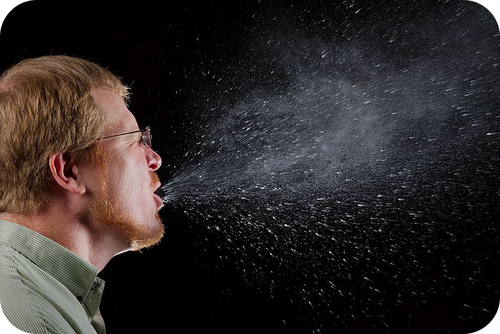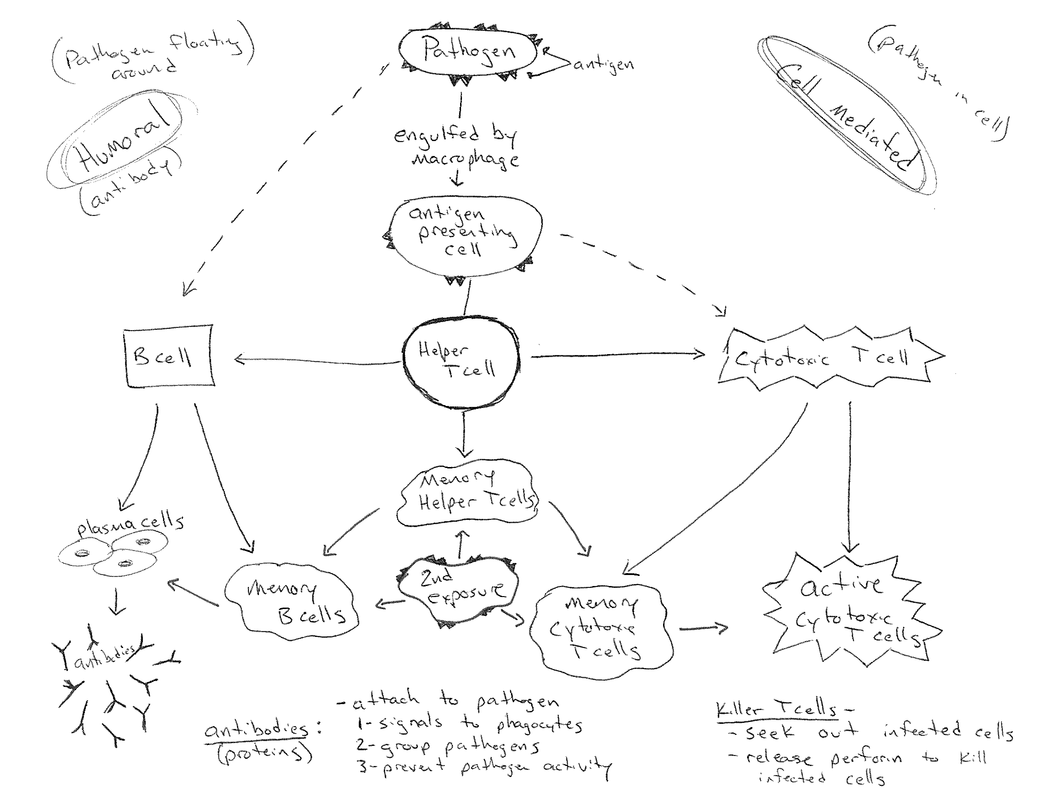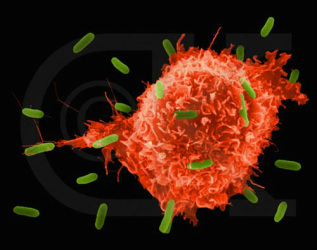What are germs?
You know germs can make you sick. They can live anywhere, from on your doorknob to in your food. A more scientific word for germ is pathogen. Pathogens Has this ever happened to you? A student sitting next to you in class has a cold. The other student is coughing and sneezing, but you feel fine. Two days later, you come down with a cold, too. Diseases like colds are contagious. Contagious diseases are also called infectious diseases. An infectious disease is a disease that spreads from person to person. Infectious diseases are caused by pathogens. A pathogen is a living thing or virus that causes disease. Pathogens are commonly called “germs.” They can travel from one person to another. TYPES OF PATHOGENS Living things that cause human diseases include bacteria, fungi, and protozoa. Most infectious diseases caused by these organisms can be cured with medicines. For example, medicines called antibiotics can cure most diseases caused by bacteria. Bacteria are one-celled organisms without a nucleus. Although most bacteria are harmless, some cause diseases. Worldwide, the most common disease caused by bacteria is tuberculosis (TB). TB is a serious disease of the lungs. Another common disease caused by bacteria is strep throat. You may have had strep throat yourself. Bacteria that cause strep throat are shown in Figure below. Some types of pneumonia and many cases of illnesses from food are also caused by bacteria. Fungi are simple organisms that consist of one or more cells. They include mushrooms and yeasts. Human diseases caused by fungi include ringworm and athlete’s foot. Both are skin diseases that are not usually serious.
Protozoa are one-celled organisms with a nucleus. They cause diseases such as malaria. Malaria is a serious disease that is common in warm climates. The protozoa infect people when they are bit by a mosquito. More than a million people die of malaria each year. Other protozoa cause diarrhea. 
Viruses are nonliving collections of protein and DNA that must reproduce inside of living cells. Viruses cause many common diseases. For example, viruses cause colds and the flu. Cold sores are caused by the virus Herpes simplex. This virus is shown to the left. Antibiotics do not affect viruses, because antibiotics only kill bacteria. But medicines called antiviral drugs can treat many diseases caused by viruses.
HOW PATHOGENS SPREAD
Different pathogens spread in different ways. Some pathogens spread through food. They cause food borne illnesses, which are discussed in a previous lesson. Some pathogens spread through water. Giardia lamblia is one example. Water can be boiled to kill Giardia and most other pathogens. Several pathogens spread through sexual contact. HIV is one example, which is discussed in the next lesson. Other pathogens that spread through sexual contact are discussed in a separate lesson. Many pathogens that cause respiratory diseases spread by droplets in the air. Droplets are released when a person sneezes or coughs. Thousands of tiny droplets are released when a person sneezes, as shown in Figure below. Each droplet can contain thousands of pathogens. Viruses that cause colds and the flu can spread in this way. You may get sick if you breathe in the pathogens. PATHOGENS ON SURFACES
Other pathogens spread when they get on objects or surfaces. A fungus may spread in this way. For example, you can pick up the fungus that causes athlete’s foot by wearing shoes that an infected person has worn. You can also pick up this fungus from the floor of a public shower. After acne, athlete’s foot is the most common skin disease in the United States. Therefore, the chance of coming in contact with the fungus in one of these ways is fairly high. Bacteria that cause the skin disease impetigo can spread when people share towels or clothes. The bacteria can also spread through direct skin contact in sports like wrestling. PATHOGENS AND VECTORS Still other pathogens are spread by vectors. A vector is an organism that carries pathogens from one person or animal to another. Most vectors are insects, such as ticks and mosquitoes. When an insect bites an infected person or animal, it picks up the pathogen. Then the pathogen travels to the next person or animal it bites. Ticks carry the bacteria that cause Lyme disease. Mosquitoes carry West Nile virus. Both pathogens cause fever, headache, and tiredness. If the diseases are not treated, more serious symptoms may develop. source Acquired ImmunityHUMORAL IMMUNITY
CELL MEDIATED IMMUNITY Immunity
Antibodies, Memory B and Memory T cells help protect the body from re-infection by pathogens that infected the body in the past. Being able to resist a pathogen in this way is called immunity. Immunity can be active or passive.
ACTIVE IMMUNITY Active immunity results when an immune response to a pathogen produces memory cells. As long as the memory cells survive, the pathogen will be unable to cause a serious infection in the body. Some memory cells last for a lifetime and confer permanent immunity. Active immunity can also result from immunization. Immunization is the deliberate exposure of a person to a pathogen in order to provoke an immune response and the formation of memory cells specific to that pathogen. The pathogen is often injected. However, only part of a pathogen, a weakened form of the pathogen, or a dead pathogen is typically used. This causes an immune response without making the immunized person sick. This is how you most likely became immune to measles, mumps, and chicken pox. You can watch an animation showing how immunization brings about immunity below. PASSIVE IMMUNITY
Passive immunity results when antibodies are transferred to a person who has never been exposed to the pathogen. Passive immunity lasts only as long as the antibodies survive in body fluids. This is usually between a few days and a few months. Passive immunity may be acquired by a fetus through its mother’s blood. It may also be acquired by an infant though the mother’s breast milk. Older children and adults can acquire passive immunity through the injection of antibodies. |
Immunitytop 5 deadliest diseasesFiles:
practice files will be updated shortly
Podcasts
Necrotizing fasciitis: flesh eating bacteria
this podcast talks about how flesh
eating bacteria works LinksVocabulary
| ||||||||||||||||||||||||||||||||||||||||||||||





